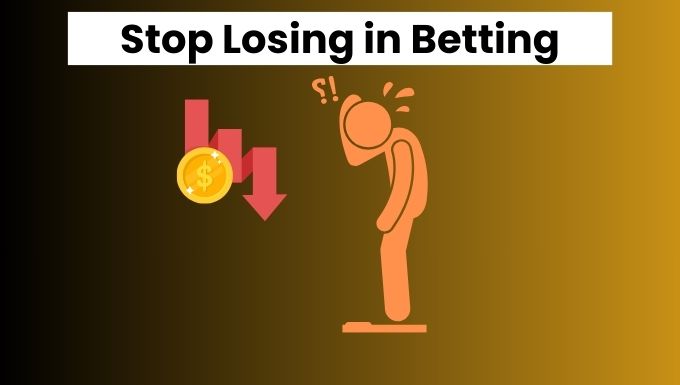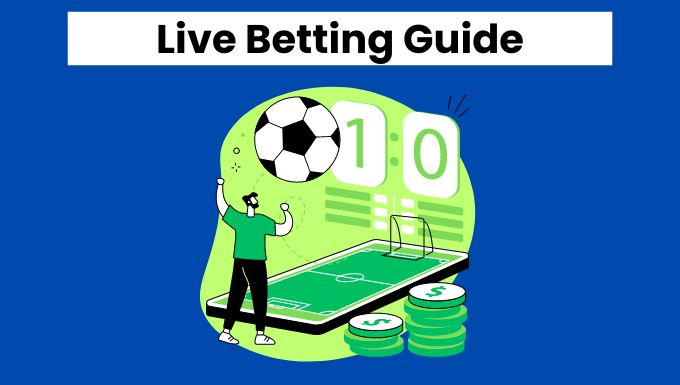Second-half betting is one of my favorite ways to approach sports betting because it’s all about reacting to what’s happening in real time. Unlike pregame bets, where you’re making predictions based on stats and matchups, second-half betting lets you see how the game is unfolding and adjust your strategy accordingly. It’s like having a front-row seat to the action and making decisions on the fly.
I’ve found that the second half of games often tells a different story than the first. Teams make adjustments, players get tired, and momentum can swing in unexpected ways. That’s where the opportunity lies. If a team is down but dominating possession or shots, I might bet on them to turn it around. If a favorite is struggling, I might take the underdog to cover in the second half. It’s all about reading the game and finding value in the moment.

Of course, it’s not without its challenges. The pace is fast, and emotions can run high, especially if you’re chasing a loss. That’s why it’s good to set limits and stick to your plan. Second-half betting is exciting, but discipline is key. Over the years, I’ve learned that the key thing is to trust instincts, focus on the stats that matter, and stay calm under pressure.
Why Second Half Betting Is Different
Second-half betting feels like a whole different game, and I’ve come to appreciate how it challenges one’s instincts in ways that pre-game or first-half betting just doesn’t. When you place a bet before a game starts, it’s all about predictions—stats, matchups, and gut feelings. But second-half betting? That’s where the real-time drama kicks in. You’re not just guessing anymore; you’re reacting. You’ve seen how the teams are playing, who’s hot, who’s struggling, and how the momentum is shifting. It’s like you’re in the middle of the action, making decisions on the fly.
What I love most is how unpredictable it can be. A team might dominate the first half but come out flat after halftime. Or maybe a key player gets injured, or the coach makes a tactical adjustment that changes everything. Second-half betting forces you to think quickly and trust your gut in a way that feels more personal, almost like you’re part of the game. It’s not just about numbers anymore; it’s about reading the flow, the energy, and the intangibles.
But it’s also risky, Sometimes, you can get caught up in the excitement and make impulsive decisions. Other times, you can overthink and miss out on obvious opportunities. Second-half betting isn’t just about winning or losing; it’s about feeling connected to the game in a way that’s raw, immediate, and totally unpredictable.
Key Stats To Watch
When it comes to second-half betting, there are a few key stats I always keep an eye on to make smarter decisions. It’s not just about gut feelings; it’s about digging into the numbers. Here’s what to focus on:
- First-half performance trends: How did the teams play in the first half? If one team dominated possession, shots on goal, or tempo, they might carry that momentum into the second half. But if they’re leading by a lot, they might ease up, which could open opportunities for the underdog.
- Fatigue and substitutions: Always check how many subs have been made and how fresh the players look. If a team has used all their subs early, they might struggle with fatigue later. On the flip side, a key sub coming on at halftime can completely change the game.
- Injuries and red cards: These are game-changers. If a star player gets injured or a team goes down to 10 men, it can drastically shift the dynamics. Adjust your bets accordingly because these moments often lead to unexpected outcomes.
- Coaching adjustments: Smart coaches make halftime adjustments. You can look for teams known for strong second-half performances—it’s a sign their coach knows how to adapt.
- Historical second-half stats: Some teams consistently perform better in the second half. Check their season trends to see if they’re a “second-half team” or if they tend to fade.
Understanding Momentum Shifts
Understanding momentum shifts in second-half betting has been a game-changer for me, both as a fan and someone who enjoys analyzing sports. Early on, I used to focus solely on stats and halftime scores, thinking they were the ultimate predictors. But over time, I’ve learned that momentum, those intangible shifts in energy and confidence, can completely flip a game. It’s not just about who’s leading; it’s about how the game is unfolding.
One thing I’ve noticed is how crucial coaching adjustments are. A team might start slow, but a smart halftime strategy can turn things around. For example, I’ve seen teams switch to a faster tempo or tighten their defense, and suddenly, they’re dominating. That’s when I realized betting isn’t just about the numbers; it’s about reading the flow of the game.
Another key factor is player mentality. If a team comes out of halftime fired up, especially after a tough first half, they often carry that energy into the second half. I’ve learned to watch body language and listen to commentators for clues. Are players celebrating small wins? Is the crowd getting louder? These subtle cues can signal a momentum shift.Of course, it’s not foolproof. Sometimes, momentum fizzles out, or the underdog surprises everyone.
Live Betting Opportunities
Live betting, especially in the second half of a game, is where the real excitement kicks in .By then, you’ve seen how the teams are performing, who’s in form, and what strategies are working—or failing. It’s like having a cheat sheet, but with adrenaline. One of my favorite opportunities is betting on the underdog if they’ve been holding their own in the first half. Sometimes, the odds are still stacked against them, but if they’ve shown grit, I’ll take that chance. It’s a gut feeling, really, but it’s paid off more times than I can count.
Another strategy I love is targeting the over/under goals or points market. If the first half was high-scoring, I might go for the over, expecting the momentum to continue. On the flip side, if it’s been a defensive battle, I’ll consider the under, especially if key players seem fatigued or the pace slows down. Player props are also a gem in the second half. If a star player hasn’t scored yet but has been close, I’ll bet on them to break through—it’s like riding their wave of determination.
Of course, live betting isn’t without risks. Momentum shifts can be brutal, and a single moment can turn everything upside down. But that’s what makes it thrilling. It’s not just about winning; it’s about feeling connected to the game, making split-second decisions, and riding the emotional rollercoaster.
Sports -Specific Strategies
In my experience studying sports betting patterns, second-half betting requires a different mindset than full-game wagers. I’ve noticed that different sports demand unique approaches because of how teams adjust their strategies after halftime.
Let’s break this down by sport:
Basketball (NBA/College):
- I’ve found that teams with strong coaching staffs often perform better after halftime adjustments. Watch for veteran coaches like Erik Spoelstra or Steve Kerr – they’re masters at reading the game and tweaking strategies.
- Look for teams with deep benches. If starters played heavy minutes in the first half, their second-half performance might decline. I especially watch for this in back-to-back games.
Football (NFL):
- Pay attention to first-half possession patterns. If a team defers and will receive the second-half kickoff, they might have an edge in early third-quarter scoring.
- Weather changes can be huge. I’ve learned the hard way that wind direction in outdoor stadiums can significantly impact second-half scoring, especially in winter games.
Soccer:
- Teams trailing by one goal often push forward aggressively in the second half, opening themselves up to counterattacks. I’ve noticed this creates more scoring opportunities both ways.
- Check for key defensive substitutions at halftime. Fresh legs in defense can dramatically change the game flow.
Tennis:
Momentum swings; If a player lost a close first set, they might bounce back strong in the second. Live betting on them can offer good odds.
Second-half betting is all about timing, observation, and understanding momentum. It’s where you can find some of the best value if you know what to look for. Instead of just betting based on pre-game stats, you get to react to what’s actually happening on the field, court, or pitch. That’s a huge advantage.
One of the biggest things I’ve learned over the years is that second halves don’t always mirror the first. Fatigue, tactical adjustments, and game situations completely change the dynamic. A slow first half doesn’t always mean a slow second half. A dominant team that missed chances early might explode after halftime. A tired defense could open the floodgates for late goals or points.
The key is staying patient. You don’t have to bet every game. Watch for patterns, understand each sport’s tendencies, and be selective. Also, don’t get too caught up in emotions ”just because a team is losing at halftime doesn’t mean they’ll turn it around. But when the right spot comes along, second-half betting can be a goldmine.


